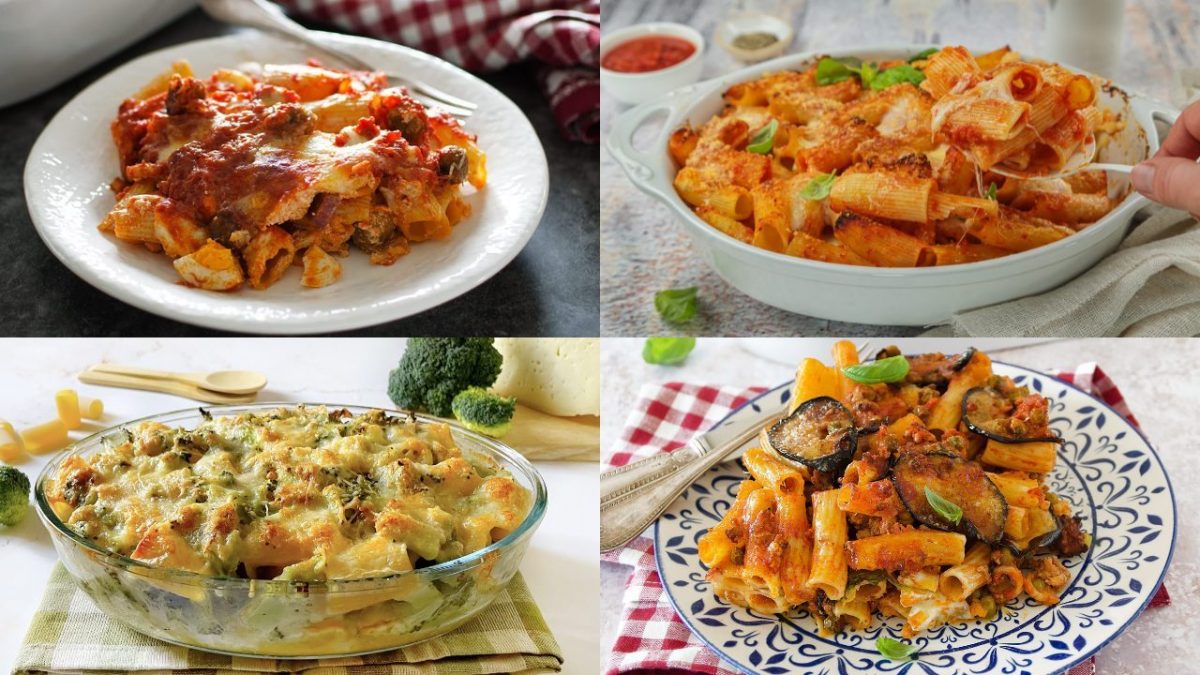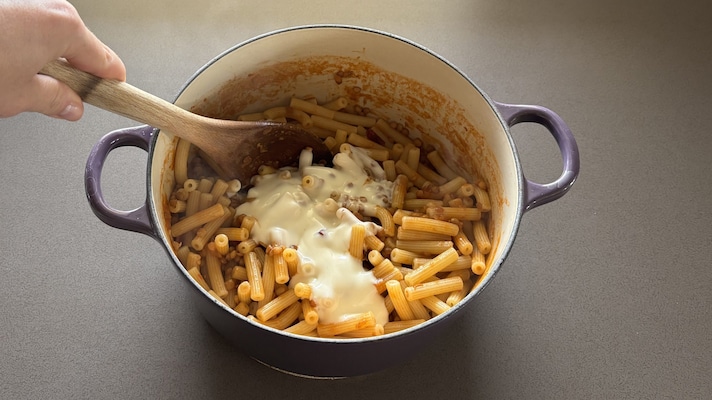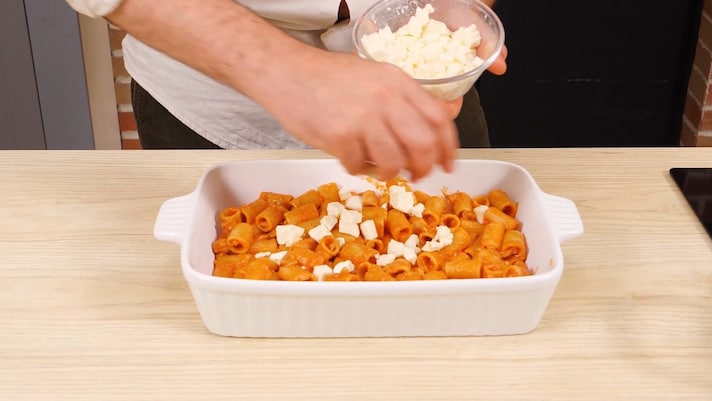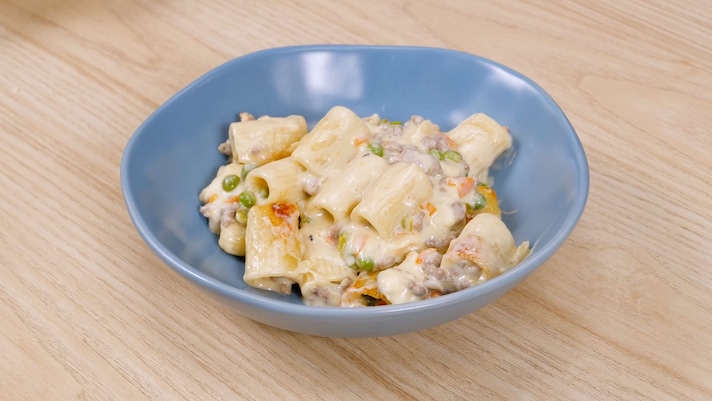
A great classic of Italian cuisine, baked pasta is one of those dishes that simply cannot be missed on holidays. Ideal to prepare in advance, it can be baked just before serving or simply reheated before going to the table: this way you will have all the time to dedicate to the other courses of the menu or to welcoming your guests in the best possible way.
The Sunday dish par excellence, baked pasta is able to please everyone: from the basic version, in which it is stuffed with meat sauce, mozzarella and béchamel, to the vegan version, with lentil ragù and vegetable béchamel, or even ‘ncasciata and alla sorrentina, typical of the regional tradition of Southern Italy, it can be made in many different variations. In some cases even changing name and shape, thus transforming into delicious and sumptuous-looking timbales or pasties.
Each family has its own personal recipe, passed down from generation to generation, but beyond individual tastes there are some golden rules to follow so that the final result is truly impeccable. Let's discover them together.
1. Pasta: Al Dente, and Of The Right Shape

For a perfect baked pasta, it is important to choose a pasta of excellent quality and drain it very al dente, practically halving the cooking times indicated on the package; even more so if the sauce is particularly rich in sauces or béchamel. This, in general, should be generously seasoned with a portion of sauce before being transferred to the pan: each portion will be tasty and soft to the right point.
Better short or long? It must be said that some shapes are better than others for baking: the short ones, such as broken ziti, penne, conchiglioni and rigatoni, hold the sauces perfectly, while the long ones are more difficult to manage. Despite some famous exceptions, such as baked anelletti, the ridged shapes are always better because they "capture" every last drop of sauce.
2. Sauce and Condiments

It is essential that the sauce is well reduced and not liquid: a sauce that is too watery could make the baked pasta soggy and with an unpleasant consistency. The same goes for mozzarella and fiordilatte: the advice is to cut them into pieces and let them drain well before adding them between one layer of pasta and another; if they are too watery, they could release excessive humidity.
If the sauce calls for a meat sauce, make sure the minced meat is well browned in a pan with a base of oil and onion (or other herbs depending on the recipe): a good seal will help us obtain a tasty and even more aromatic sauce. The sauce must also be very generous: season the pasta well, so that it does not turn out dry once baked in the oven, and sprinkle it with plenty of mozzarella or fresh provola, for a rich and stringy result.
Don't skimp on cheeses, such as parmesan and grana: sprinkle them generously on the surface, to obtain the irresistible golden crust, and buy them of excellent quality and only with the DOP brand. Even the size of the ingredients should not be left to chance: whether it is a sauce based on meat, vegetables or fish, the various elements must be cut into small and possibly regular pieces.
3. Pay Attention to The Assembly

First of all, it is important to choose the right pan and the right size: if it is too big, for example, you risk the final result being uneven and unbalanced. To prevent the pasta from sticking and to obtain a nice golden crust on the bottom and edges, remember to butter (or grease with a drizzle of oil) the baking dish, then sprinkle it with a little breadcrumbs. At this point, proceed with a thin layer of sauce, ragù or béchamel depending on the recipe.
Make sure that the sauce, béchamel, cheeses and other topping ingredients are evenly distributed between the layers of pasta and, in the case of timballo, pour the seasoned pasta into the pan and then press it lightly with a spoon to compact it: this will help it maintain its shape once cooked and portioned.
4. Oven Cooking: Times, Temperatures and Resting

For uniform and flawless cooking, the ideal temperature is generally around 356-392°F/180-200°C: too high a temperature would risk burning the surface, leaving the inside not very hot, while a low one could make the preparation dry and parched. Also pay attention to the cooking time which will depend on the size of the pan, the oven and the chosen mode.
Static or convection? Both methods are fine, but it is important to keep in mind that there are some differences: the fan-assisted one, for example, cooks faster than the static one, and therefore will require a temperature of 50-68°F/10-20°C less. Monitor the cooking time carefully and do not leave the pasta in the oven for too long, otherwise it will dry out.
Once baked, it is advisable to let the preparation rest for at least ten minutes before portioning and serving it: the rest will allow the ingredients to settle and the flavors to blend perfectly. By compacting, the timbale will also be easier to cut and the portions better defined.
5. The Perfect Gratin

A baked pasta worthy of the name must have a golden and crunchy crust on the surface. How to get it? The golden rule is definitely to set the oven to grill mode for the last few minutes of cooking; the advice, in this case, is to monitor the preparation and never lose sight of it: if the appliance were to be too violent, it could burn it and compromise the final result.
The choice of ingredients is also important: if béchamel is called for, cover everything with a generous sprinkling of parmesan or grated wheat; in the case of pasta with tomato sauce or other vegetables, complete everything with diced fiordilatte, grated cheese and a sprinkling of breadcrumbs. In the case of vegan variations, instead, replace the mozzarella with a vegetable alternative and the cheese with nutritional yeast flakes.
;Resize,width=767;)
